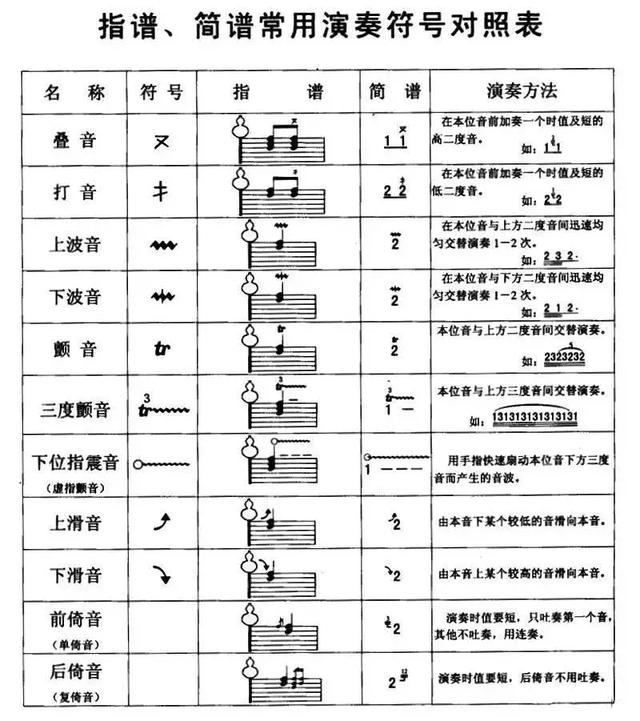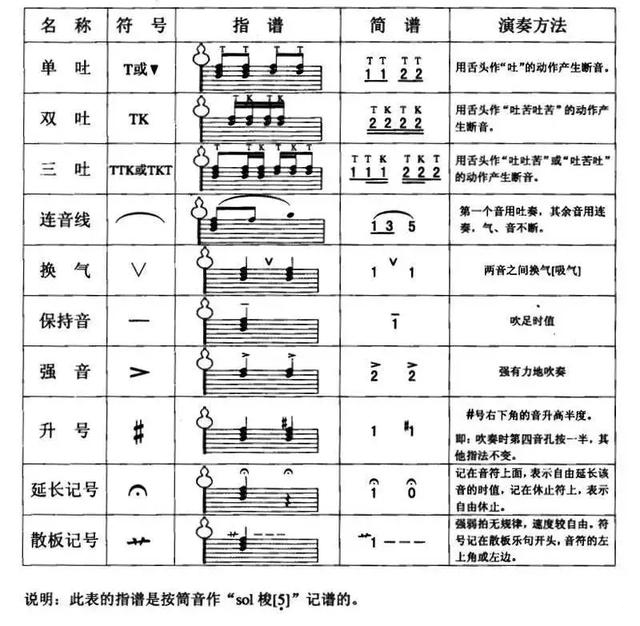Comparison table and meanings of commonly used playing symbols of cucurbit flute notation and musical notation
When we play and learn cucurbit flute, we often see some special symbols in musical scores or notation, but we don't understand what they mean. The following is to organize and explain the meanings of these common symbols.


1. Spit "T" alone, use the tip of the tongue against the front half of the upper palate (that is, the state before the pronunciation of the word "spit") to cut off the air flow, then quickly release the tongue, and the breath is blown out. Through the continuous action of one top and one release, the airflow enters the mouthpiece intermittently, and the single vomit effect of intermittent split can be obtained, and the process of single vomit is completed. Single spit is usually marked above the note. According to the needs of music performance, single vomit can be divided into two types: intermittent vomit and continuous vomit.
2. Double spit "TK". The double vomit is a technique used to complete a series of rapid splits. First press the tip of the tongue against the front palate, then release it and pronounce the word "spit". In short, after the word "spit" is issued, a word "bitter" is added immediately, and the word "spitting out" is connected to form double spitting.
3. Three spit "TTK" or "TKT", that is, "spit bitterness" or "spit bitterness", three spit is actually a comprehensive application of single spit and double spit in a certain rhythm pattern.
4. Legato "⌒", legato is one of the common techniques. Suitable for lyrical phrases or passages. The symbol "⌒" (tuplet line) is used to indicate that the sounds in the tuplet line do not need to be spit except for the first sound. When playing legato, it is necessary to emphasize coherence and smoothness.
5. Vibrato "tr" or "tr ~~~~~", vibrato is formed by the rapid alternating appearance of two different pitches. The specific requirement is to open and close the sound hole of the second or third sound above it quickly and evenly after the original sound is emitted.
6. The double sound "you" and the playing sound "扌" are similar in technique and effect, and their definitions are also different. It is to add a very short duration of a high second through a third to the moment before a certain note appears.
 渝公网安备 50010702504639号
渝公网安备 50010702504639号